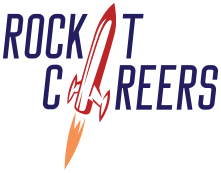So, you just received a call for an interview, landed a new job, were promoted to another department, or are heading to a different location for training. One of the first things that likely crosses your mind is what to wear. While it might seem trivial, your attire plays a significant role in making the right first impression.
Remember, it takes mere seconds for someone to form an initial judgment about your character based on your appearance. Whether this assessment is fair is a discussion for another time. The reality is that first impressions are formed rapidly. Conversely, it can take approximately five subsequent interactions to alter a negative initial impression. As the old Head and Shoulders commercials wisely advised, you never get a second chance to make a good first impression.
To ensure you start off on the right foot, here are a few foolproof suggestions to navigate your workplace dress code:
1. Err on the Side of Conservative.
You will almost never be judged negatively for dressing more conservatively. But what does that entail?
For men, this generally means:
- Suit (depending on the role)
- Button-down long-sleeved shirt and tie
- Slacks
- Polished dress shoes and dress socks (avoid white tube socks or no-show socks)
- Professional watch
- Neatly trimmed hair and either clean-shaven face or trimmed facial hair
- Clean and clipped fingernails
For women, this typically includes:
- Suit (depending on the role)
- Blouse or button-down shirt
- Skirt (of appropriate length) or slacks
- Closed-toe dress shoes (no sneakers or flip-flops)
- Minimal accessories
- Professional watch
- Manicured fingernails
- Modest attire with no exposed midriff
When in doubt, opting for a more conservative look is your safest bet. The worst-case scenario is feeling slightly overdressed, which demonstrates that you are putting in more effort than the bare minimum.
2. Dress in Layers.
This is another effective strategy when you’re uncertain about the appropriate attire for a particular event or day. Layering allows you to adapt your look. Many wardrobes offer pieces that can transition between casual and professional. For instance, a man could wear a sports jacket over a polo shirt, and a woman could pair a more casual top or blouse with a blazer. This way, you can easily remove a layer if you feel overdressed compared to others.
3. Do Some Reconnaissance Beforehand.
A valuable way to eliminate some guesswork is to observe what your future colleagues typically wear. When someone starts a new job, we often advise them to scout the location a few days in advance. Visit the office building about an hour before it opens and find a spot where you can discreetly observe the arriving employees.
Take note of their arrival times – do they tend to come in early? More importantly, pay attention to their attire. You’ll quickly gain insight into the expected dress code.
4. Dress for the Situation.
Finally, consider the nature of the work you’ll be performing. If your job involves tasks that are less formal than typical desk work, you might not need to dress as formally.
There will also be occasions outside the office where a more casual approach is practical. For example, an office picnic on a summer afternoon or a team-building activity likely won’t require a suit.
However, even in these informal settings, avoid dressing too casually. Remember, you’ll be interacting with your boss and colleagues, not close friends who are indifferent to your attire. Therefore, opt for a nicer short-sleeved shirt (even t-shirts can be acceptable, provided they aren’t worn out). It’s also wise to avoid clothing with political or social statements, as differing opinions could unfortunately impact your career if someone in a position of authority disagrees with your views. Choose a nice pair of jeans or shorts – nothing too revealing, tight, or ripped. Tennis shoes are acceptable in these situations, but select your best-looking pair, not the worn-out ones you use for chores.
While this all might seem like common sense, it’s a topic that arises frequently enough to warrant discussion. Now, the next time a colleague asks you what you’re wearing tomorrow, you’ll know exactly what to tell them!

